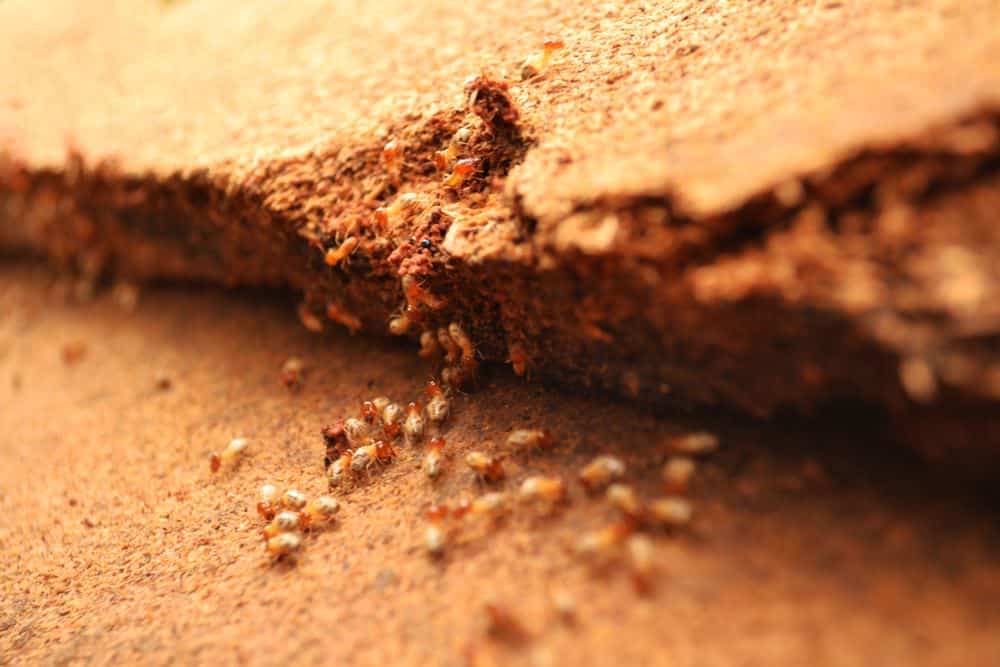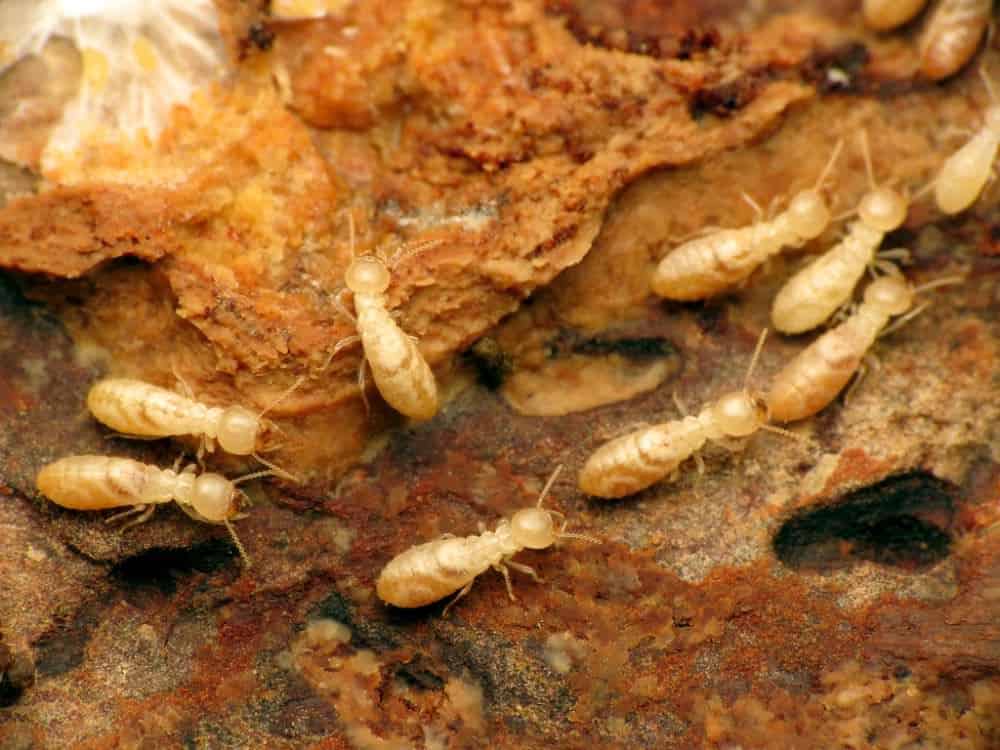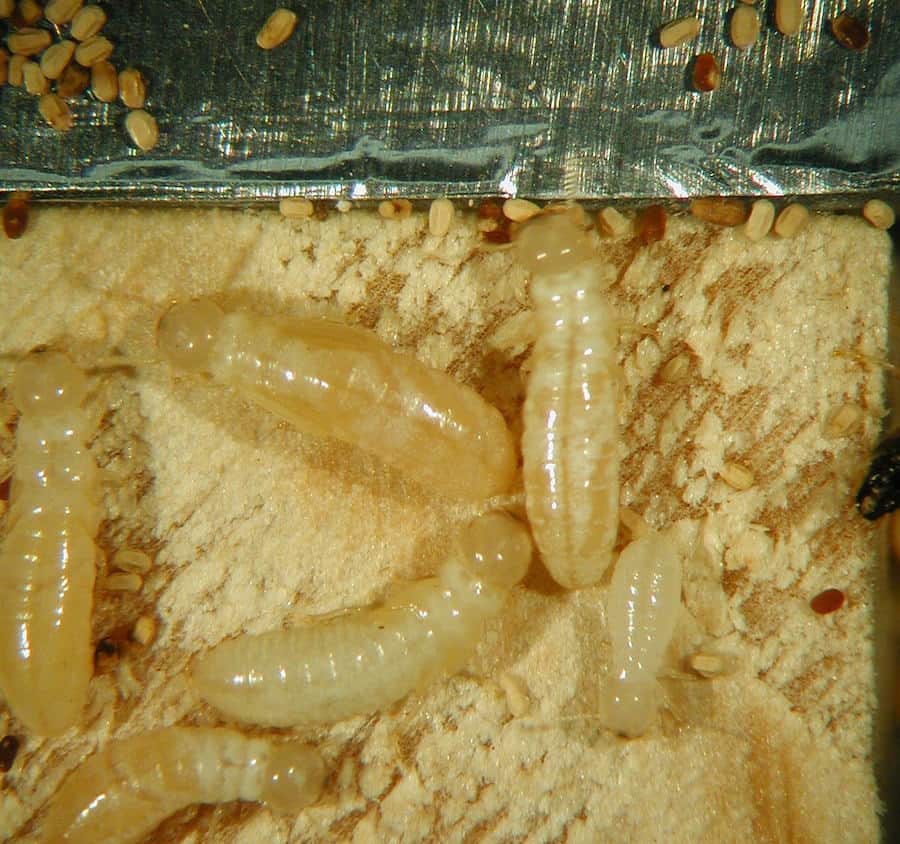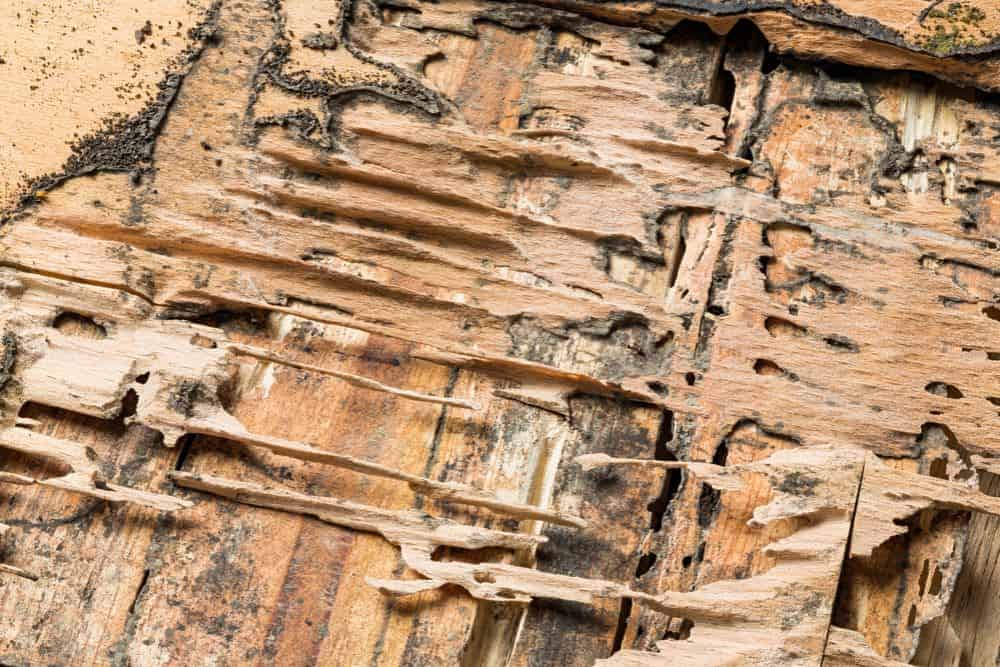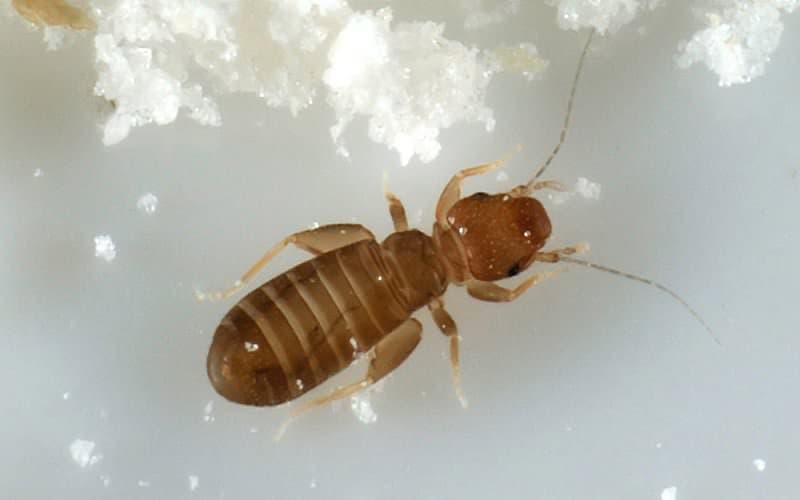Termites Vs Carpenter Ants
We often confuse carpenter ants with termites—and for a good reason. These insects have many similar features, both physically and in the way they live. Both are very social, staying close to their family, living in colonies and excavating wood.
Distinguishing them, however, is essential if you suspect an infestation. Although they are similar, they each require a different method of pest control. We will look at their differences and similarities, to help you figure out which of them is invading your home.
What Do Carpenter Ants Look Like?
Carpenter ants are among the largest ants we find in the U.S. This species, much like other ants, divides into several castes or positions within the individual colony, including a queen and workers.
Their bodies consist of an evenly rounded thorax and a single-node, narrow waist, called a petiole. They have a pair of antennae, which forms a bent, L shape on the top of their head.
Some ants, known as reproductives or alates, will have two pairs of large wings, stretching beyond their long body.
The queen is the largest of all the ants, measuring about between ½ inch and ¾ inch. Her color depends on the sub-species. Some are black, while others are red or brown.
Carpenter ant eggs resemble tiny grains of rice. They are slightly off-white, almost yellow, with a smooth, shiny exterior. The eggs generally stick together in small clumps and soon develop into larvae.
The larvae are slightly larger and are white, almost transparent. Their exterior is often hairy and soft. During the larval stage, the offspring remain legless. The first batch of eggs generally develops into sterile female workers. These will feed on fat reserves from the queen until fully evolved. Then they take over the responsibilities of the nest.
The workers are wingless. These are smaller than the queen, about ⅓ to ½ inch. Their color can vary between red, brown or black, depending on the species. These are usually the ones we see roaming our floors as they scavenge for food.
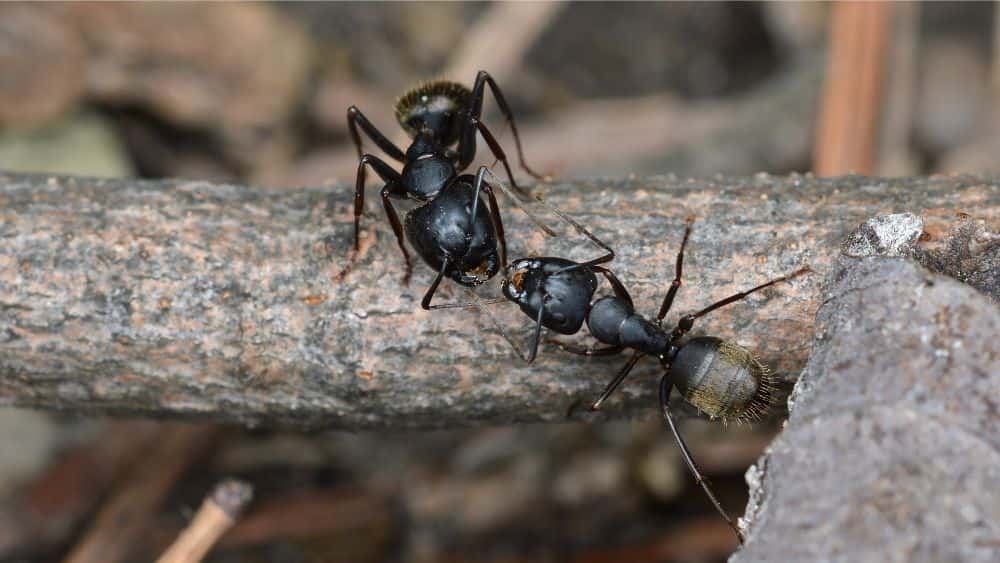
What Do Termites Look Like?
There are more than 2,000 termite species in the world. Appearances differ between the species, but today we will give you a general description.
The termite’s color and body size depends on the species. They may be dark brown or black, with the king and queen a darker color than other ranks. The termite’s size ranges from ¼ inch to ½ inch, although the king and queen may be up to an inch long.
A termite’s body shape is unsegmented, long and broad, of equal width throughout.
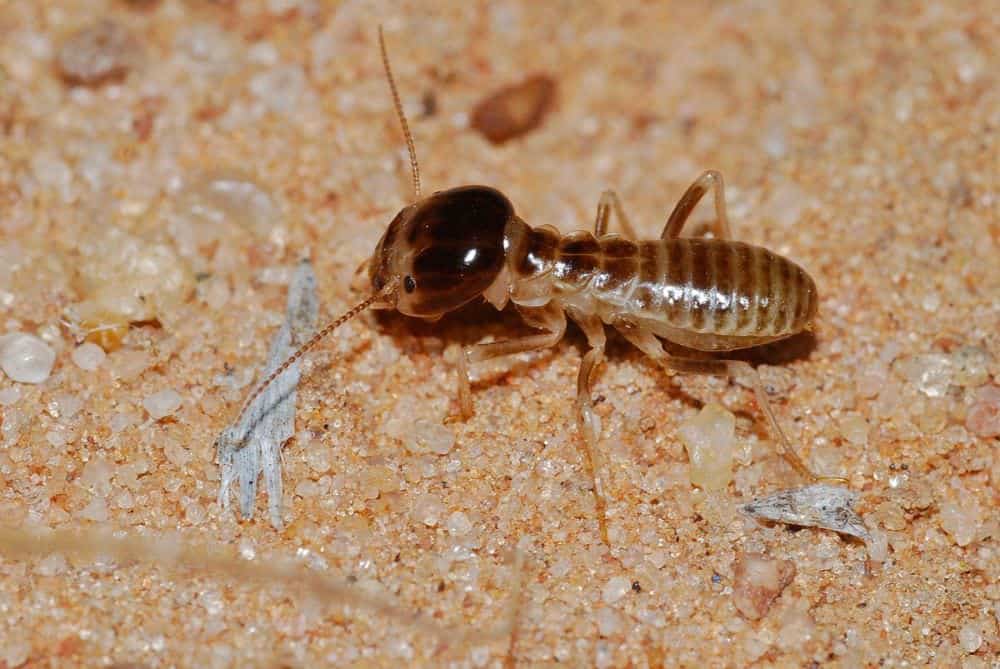
This species also has a pair of antennae on the top of their head. The termite’s antennae are straight, sometimes resembling small beads.
The termite alates have two pairs of large wings, in preparation for swarming to find and establish new colonies later in life.
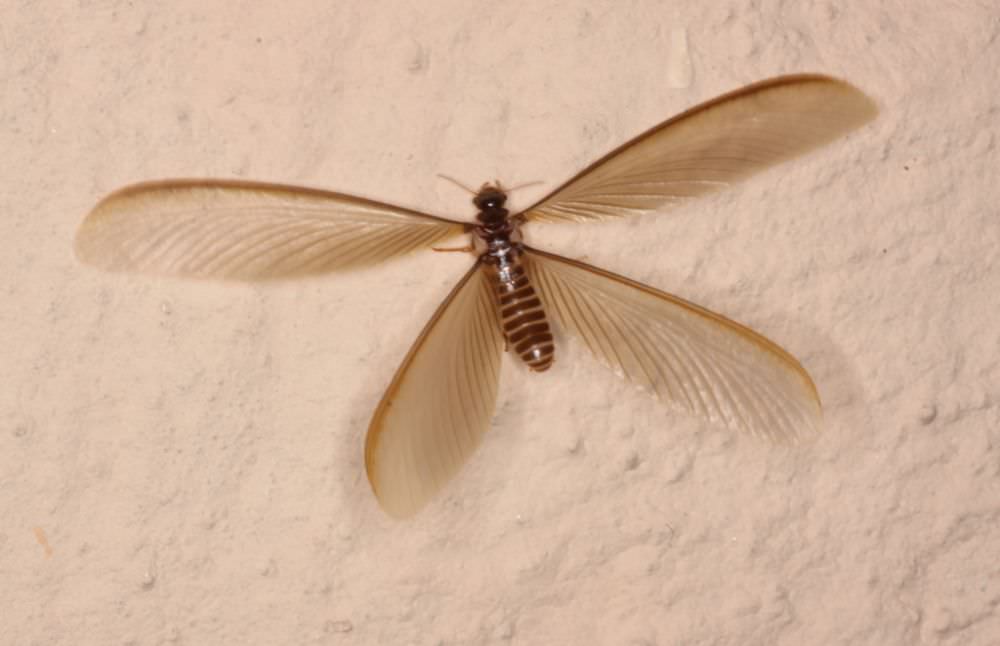
The queen starts life the same size as the king and other reproductives. But her abdomen grows excessively as she matures, and eventually appears as a large sack at the end of her thorax.
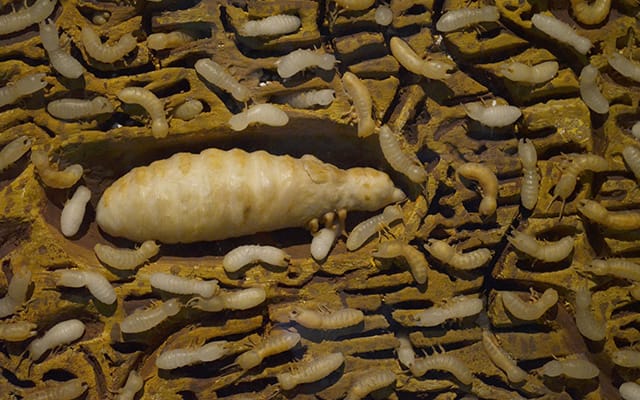
There are also secondary or tertiary reproductive females in a termite colony. These may produce offspring when the colony increases in size, or when the queen dies. They are generally dark in color and wingless, similar to the king.
Termite eggs are very small, about the same size as a “full stop” in this article. They resemble jelly beans in shape. They are, generally, white or yellow in color, regardless of the species. The workers collect the eggs soon after laying, and care for them until adulthood.
Termite larvae are about the same size as the eggs, and their appearance resembles that of the worker termites. Most will develop into workers or soldiers.
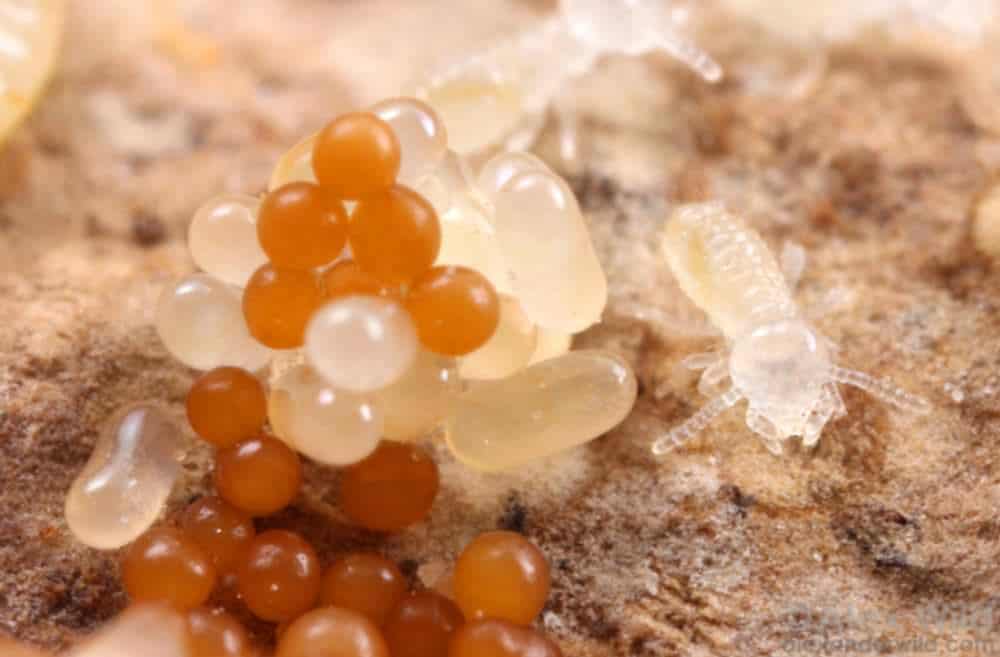
You are unlikely to see the termite workers, as they remain inside the tunnels or tubes. Most species are creamy-white in color, slightly smaller than the king and queen. They usually have a worm-like appearance. Their heads and jaws are hard, while their bodies are soft and squishy. They do not have eyes and, therefore, are unable to see.
Termite soldiers are similar to the workers, except they have a larger head. They have massive v-shaped jaws, called mandibles. The soldier’s primary task is to protect the nest from predators. Depending on the species, soldiers vary in color. Some may appear reddish while others are nearly black. The formosan termite soldier, as another example, has a white, almost transparent, body, with a dark head with black jaws.
Similarities & Differences
Similarities
There are a number of similarities between carpenter ants and subterranean termites. These likenesses are not so much in their looks, although at a glance it is easy to mistake one for the other. In terms of behavior, both species excavate wood, which can cause damage during infestations.
Inside their small communities, both species divide themselves into castes, or ranks, which include a queen, reproductives (also called alates) and workers, that are both male and female. The queen is the founder of the nest and is the one responsible for producing offspring. Workers keep the queen happy by fetching food and attending to her eggs and larvae.
Carpenter ants and termites are also quite social. They rarely venture off alone, except to build a new nest and establish a new colony. This is when the colony has grown too big for the increasing population. The alates of both species will fly out in search of another location to establish a new colony. These are also known as swarmers.
Differences
Although these two species are similar, they do have a number of differences. Their appearance has been discussed above, but I will give a quick recap here.
Carpenter ants have a very small, pinched waist, while termites are of equal width throughout the length of their body. The termite’s antennae are straight and can appear as small beads. Carpenter ants have bent, L-shaped antennae.
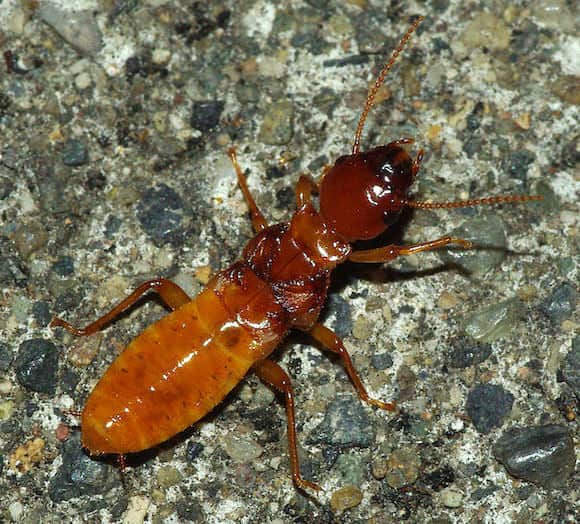
Ants have eyes and can see, but a termite’s eyes are small and weak. Worker and soldier termites have no eyes. A termite alate’s wings are uniform in size, whereas the forewings of an ant are broader and longer than the hind wings.
Now for the difference in their lifestyle.
After swarming, the future ant queen will mate with her partner and shed her wings. The male dies after mating. The ant queen then goes in search of a location to lay her eggs and form a new colony.
The termite king and queen will search for a new colony location first of all. After finding a suitable place to nest, only then will they shed their wings and mate.
As mentioned earlier, both species consist of a queen, reproductives and workers. The termite colony also has a king, who will stay with the queen for life. Generally, only the queen will lay eggs and reproduce. Termite soldiers protect the colony.
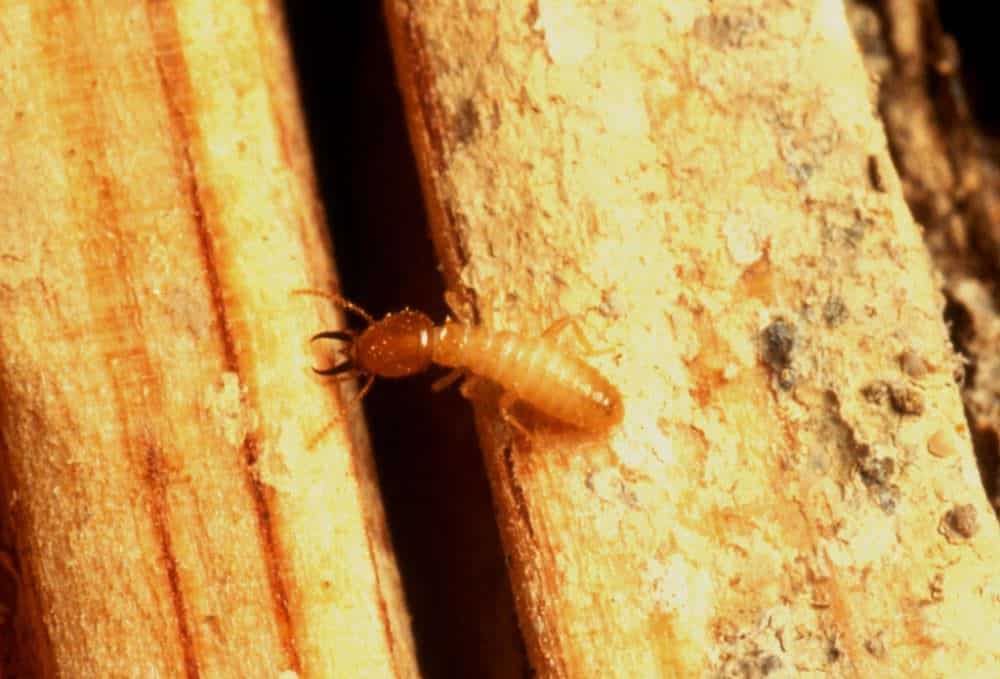
Ant colonies do not have a king as he dies after mating with the queen, before the colony is formed. Most of her offspring are female and become the workers of the colony. Some fertile females will also become queens and later begin to reproduce. The male ants who mate with a queen will die after mating.
Termites feed on wood; they require the cellulose found inside the wood, to survive. Carpenter ants, on the other hand, excavate wood to live inside it, but they don’t eat wood. Ants will feed primarily on matter containing proteins and sugars. Carpenter ants are very attracted to sugary objects.
Finally, you are highly unlikely to spot termites outside the nest, except during the swarming “season.” Flying ants, on the other hand, will swarm throughout the year. Also, as we all know, ants are not afraid to be seen outside the nest, foraging for food.
Summary
Carpenter ants and termites both live in wood and divide into castes, led by a queen and serviced by workers. Although it can be tricky to distinguish them solely by studying their behavior, they do have their differences. Termites feed primarily on wood and ants only excavate the wood to expand their home.
Sometimes the easiest way to distinguish them is by trapping one or the other to study it, or noticing the clues they leave. Ants will readily wander around your home, whereas all you may see of termites is a discarded pair of wings.

